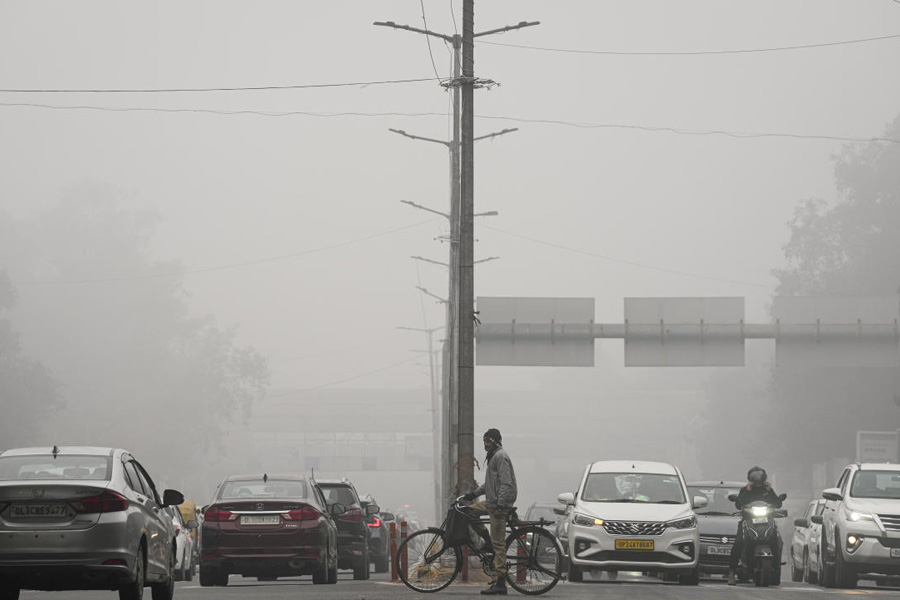India’s ranking as one of the world’s fastest growing economies — a bright spot in a troubled and slowing world economy — routinely figures in the public discourse. It was upheld even as oil prices zoomed and inflation surged early this year. It did not waver when growth forecasts were lowered some six months ago. It wasn’t rattled when growth underperformed in the April-June quarter. And it resonates, once again, amidst further downgrades by the World Bank and the International Monetary Fund to 6.5% and 6.8%, respectively. Soothing as it may be to stand out when others are growing slower than us, the triumph over growth rates and rankings needs a contextual placement. In the present instance, the perspective is provided by the repeated income shocks of the last two years and what their immediate and future consequences may be. A reality check is appropriate.
We must recall the severe contraction of national economic output due to the pandemic in 2020-21 (-6.6%). That devolved upon pre-existing economic weakness — the previous year, 2019-20, India’s GDP growth had collapsed to 3.7%. Two successive waves of the virus have been accompanied by the resurgence of inflation which hits India — a net importer of oil and commodities — and Indians particularly hard. Real incomes have been falling even before being fully restored from the pandemic shock. The cost-of-living crisis, monetary and financial tightening, lasting effects of the pandemic, and Russia’s invasion of Ukraine are expected to drag down the world economy which, according to the IMF, is likely to grow at its slowest since 2001, excluding the global financial crisis and the critical pandemic year. These factors would undoubtedly affect India’s revival prospects adversely.
The Fund-Bank meetings have significances beyond these periodic economic outlook updates. The accompanying research identifies and analyses pressing problems of economic policy, often illuminating specific developments that enable better understanding of their member policymakers in a comparative international perspective; at times, these have proven to be cautionary.
This year, the World Bank’s comprehensive examination and analysis of poverty and inequality stand out for stretching itself to cover the impact of Covid-19. Poverty and Shared Prosperity (2022) sheds light on a historic increase in global poverty in 2020 due to the pandemic shock — 71 million more people are likely living in extreme poverty, 11% higher than in 2019. A setback to decades of progressive reduction, the last such increase in poverty was seen after the Asian crisis of 1997-98 (37 million more people were added). While poverty rose the most and nearly in all of the low- and middle-income countries, the magnitudes were the largest in the latter with the majority of resident being in South Asia. Between 23-56 million or 32-80% of the poor are estimated to be in India, a feature consistent with the shock GDP contraction in the pandemic year, the largest among the emerging market and developing economies. This wide range in poverty estimates is attributable to different measurement methods employed in absence of any official consumer expenditure survey after 2011-12 (the 2017-18 survey was not accepted by the government). The World Bank used per capita income growth and a survey-to-survey imputation with the Centre for Monitoring Indian Economy’s “Consumer Pyramid Household Survey”. Even accepting the lower bound, the increase is alarming. It should not be lost sight of in elation about outstanding growth performance relative to other countries.
According to the World Bank’s projections based on growth recoveries, in 2021, little progress was made to reverse the pandemic-induced increase in global poverty to pre-Covid levels. Overall, these have been very uneven and not strong enough in at least half of the lowand middle-income countries. Worse, this restoration is expected to effectively stall this year, partly because of the war and food and energy price shocks; already, poor growth projections have lowered poverty reduction rates. If these nowcasts hold, then the reduction in India’s growth forecasts, in absolute rather than relative sense, would have sobering implications for impoverishment levels.
How the income losses are distributed matters too. Global inequality increased during the Covid-19 crisis and a substantial part of the widened gap or between-country inequality was due to India’s falling incomes. The reverse or the upside of this is that the level of losses is assessed to have significantly narrowed thereafter, also because of India’s swift and large growth rebound, although the poorest 20% globally have not recouped their losses fully unlike the top 20% that have more than recovered their initial income losses. Here, there is growing anecdotal evidence within India, including inferences from official employment data, that the post-pandemic restoration in incomes has been unequal, such as growing confirmation from the skewed sales of high-end versus entry-level cars or the subdued demand for two-wheelers, the mainstay of mobility for low-income households.
Looking beyond the immediate outcomes of severe aggregate shocks is perhaps more important because of the lasting damages they can inflict. Recent research by the Bank of International Settlements (“The scarring effects of deep contractions”) examines the effects of deep growth contractions upon 24 advanced and emerging economies from 1970 to the present — the scarring effects persist, are asymmetric, and depress the level of output for at least a decade. While such damages from financial crises have been known, the same happened after the deep shrinkages of the 1970s and 1980s following the oil price shocks and restrictive monetary policy to counter high inflation. Moreover, it is the size of the contractions rather than their cause that is the better indicator of possible scarring or hysteresis, a condition that persists even after factors responsible for it have lifted (for example, an increase in unemployment leads people to adjust to lower standards of living and lower aspirations, including acceptance of joblessness).
We should note these learnings with sobriety. The circumstances in the 2020s are not too dissimilar. Growing faster relative to others countries ought not to blind us to the possibility of a depressed growth trajectory in the future as the above historical evidence uncovers nor to the past deterioration in our own growth performance that pre-dates the pandemic.
Renu Kohli is a macroeconomist











